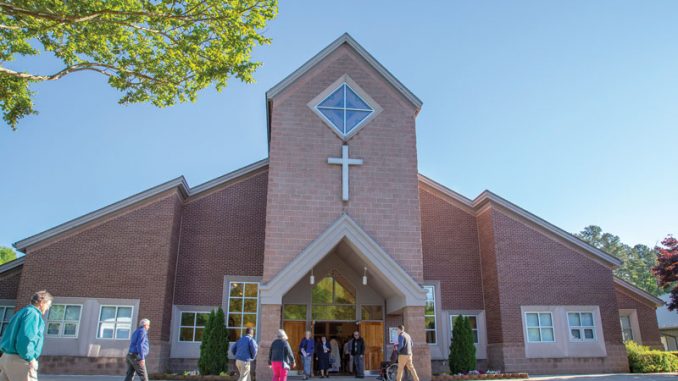
CHARLESTON—The number of Catholics in South Carolina continues to grow year by year, and a map recently released by the diocesan Office of Planning and Operations offers an interesting perspective on where the faithful are settling when they get here.
If you want to find packed Masses on Sunday, for instance, look at the Upstate, anywhere on the coast, and in the areas around Rock Hill. These three locales reflect the largest amount of growth in the number of Catholics, according to figures gathered from parishes in 2019.
The map shows the number of registered individual Catholics as reflected in statistics provided by individual parishes when they fill out their annual parish pastoral reports, according to Jamie Zbyrowski, supervisor in the diocesan Office of Planning and Operations.
Annually, each parish is asked to report the number of actual individuals registered who are members, not just the number of households. This is important because a household could consist of one single adult living alone or a multi-generational family including grandparents and many children, so simply counting households would not reflect the actual number of people that the parish serves, she said.
“We use the information we get each year to track trends in the diocese,” she explained. “For instance, in areas where we see a high density of population, we might need to consider if that area needs another parish.”
The Office of Planning and Operations also compiles an annual report of sacramental statistics, including baptisms, first Holy Communions, and confirmations. Data from that report is shared with officials at the Vatican for a sacramental report that they compile each year.

Zbyrowski said while the survey is very helpful, it is inevitable that some of the faithful slip through the cracks because some people don’t register at the parish they regularly attend, while others “parish-hop” and attend Mass at a variety of different churches in their area. Still, the study is one of the best ways to regularly document the population.
Some of the interesting facts revealed by the 2019 survey:
In 2019, parishes reported a total of 203,394 individuals registered statewide, up from 188,484 in 2010. The counties with the highest 10-year increase in individuals registered were Lancaster and Newberry. Catholics now make up four percent of the population of South Carolina.
The five counties with the largest number of registered Catholics in 2019 were Greenville (27,201), Charleston (25,904), York (18,821), Horry (17,872), and Richland (15,408).
Catholics in the Palmetto State are found in the greatest density in the Upstate around Greenville, along the coast from Beaufort to North Myrtle Beach, and in Rock Hill and the counties immediately surrounding it. This growth is being fueled by a combination of people moving to the state for jobs and retirement.
The county with the highest percentage of registered Catholics in relation to population is Beaufort, with 20,633 registered Catholics, which make up about 11 percent of the population according to 2018 estimates. Beaufort is followed by York and Edgefield counties, where Catholics are close to seven percent of the population.
According to the survey results, only three counties in the state have no registered individuals: Bamberg in the Beaufort deanery, Calhoun in the Columbia deanery, and Lee in the Myrtle Beach deanery. Zbyrowski stressed the fact that this does not mean there are no Catholics living in those counties. These are also counties that currently do not have any permanent parishes or missions, and the faithful living there likely have to drive longer distances to attend Mass.
Other counties with small numbers of registered Catholics include Union County in the Greenville deanery with 48, Hampton County in the Beaufort deanery with 41, and Marlboro County in the Myrtle Beach deanery with 61.
